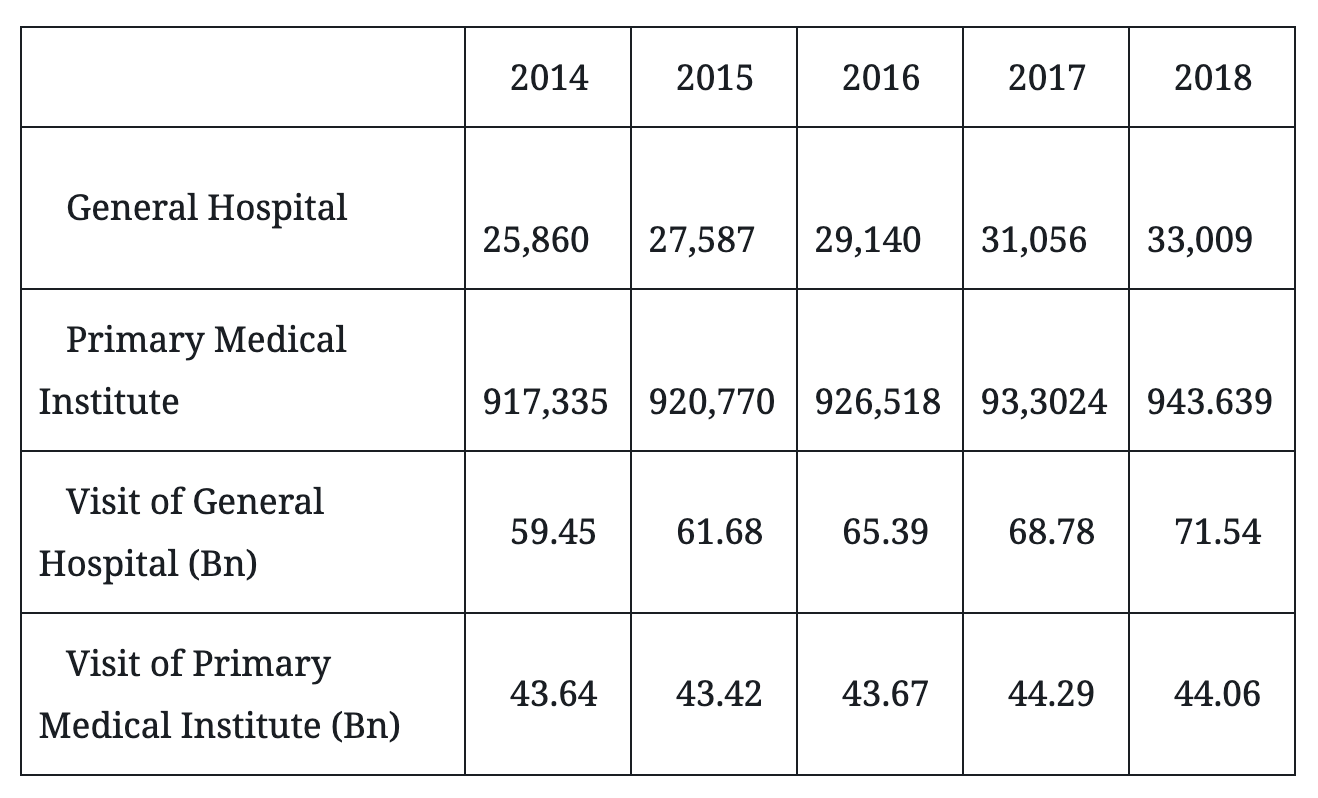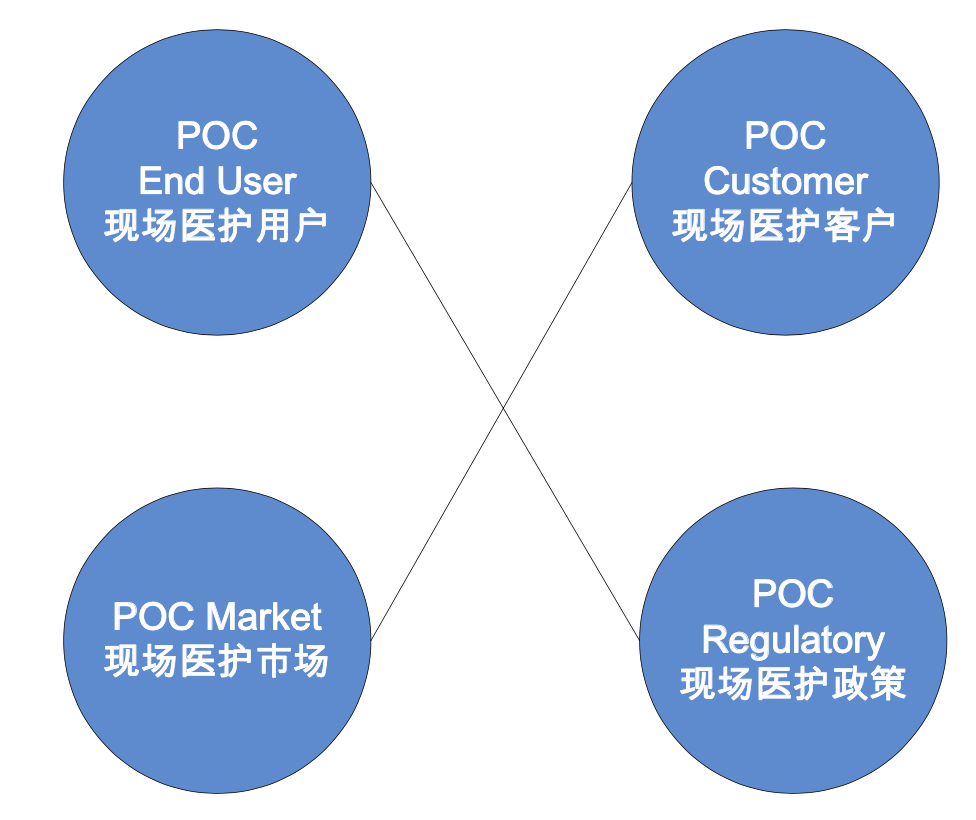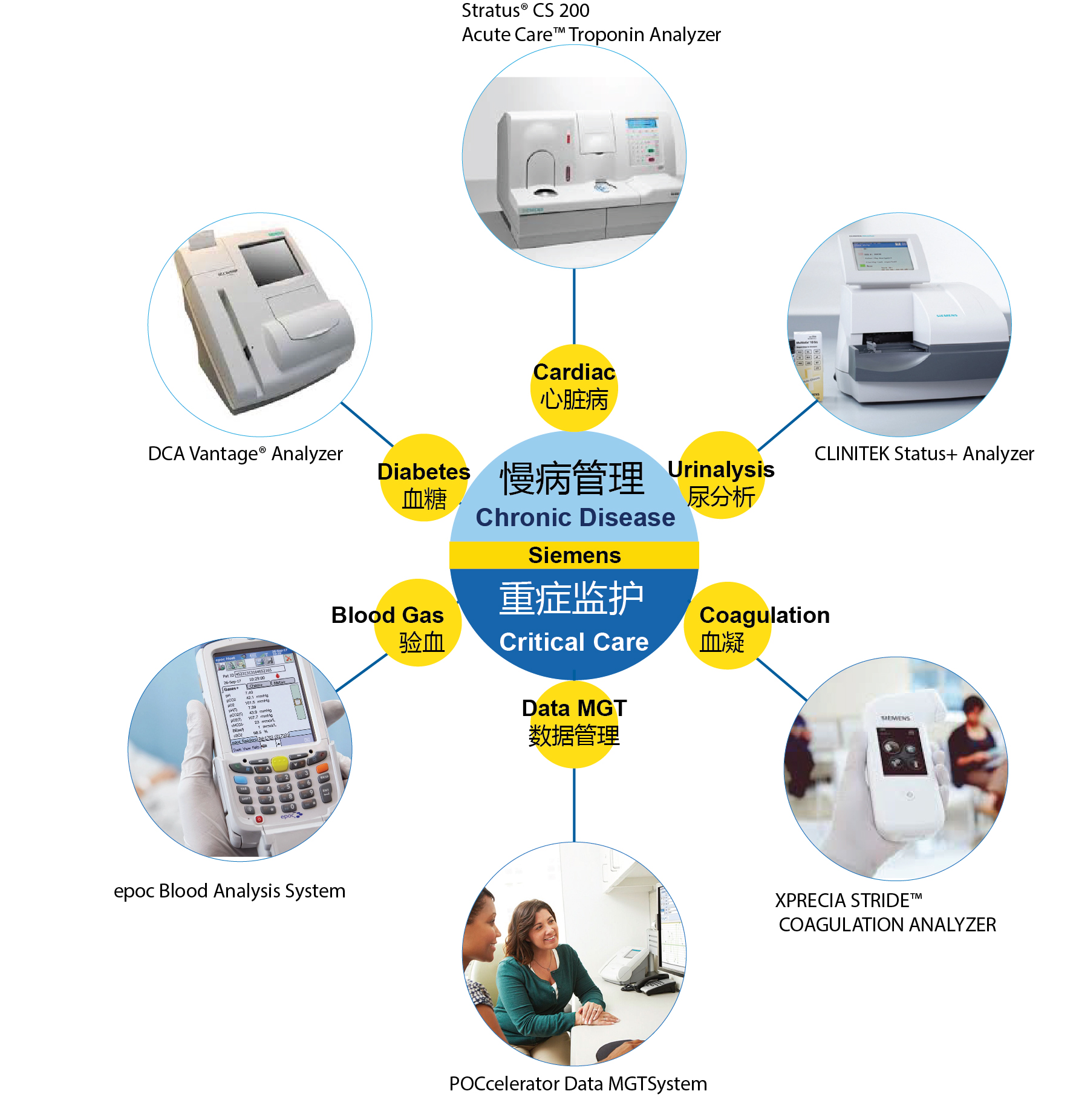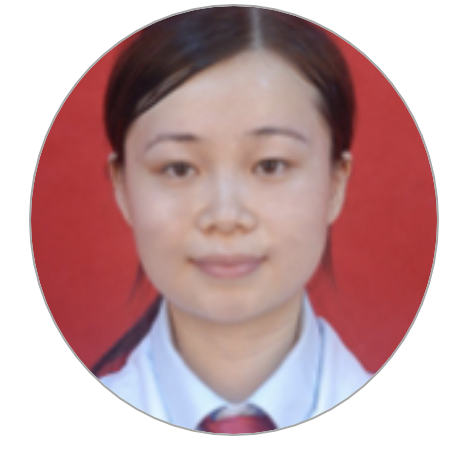China’s POC market and investing research -Issue 2020-1
The shortage of high-quality medical resources and people’s increasing demand for healthcare is a global challenge. In this report, TMFOX Healthcare team objectively conducted an analysis and demonstrated the innovation path and investment value of Point of Care Technology (POCT), and provided case suggestions for POCT to empower primary care. This study is based on 1) multi-dimensional changes of patient needs; 2) distribution of high-quality medical resource, and 3) real cases analysis.
More than 70% patients already have consumer characteristics
- Patients will be better at using Internet information tools than doctors. They no longer trust doctors unconditionally as they did in the past; but demand full transparency in treatment process;
- Information technology has never reach such a level that has allowed patients to use various convenient tools for self-management of health and disease. They already obtained basic medical knowledge and strong desire for preventing disease, and wish to collaboratively interact with medical providers on an equal basis;
- In the past 10 years, with the inconsistent adjustment of various regulatory policies in China’s healthcare industry, patients have become more sensitive to prices and outcomes. They want to have “reasonable cost and explicit results”.
From 2010 to 2019, it is a decade of rapid expansion of artificial intelligence(AI) and mobile internet in China’s healthcare market, and a golden decade of transformation of the patient conduct into consumer behavior. The continuous innovation of mobile healthcare or Internet healthcare in the traditional healthcare system has made patients more mature when dealing with health consumption. According to TMFOX survey: In the area that is densely populated and economically developed, approximate 43% of newly diagnosed patients will study related health conditions or diseases through the Internet or reference books before making a doctor appointment; about 12% of i patients who are prepared to see the doctor will make a tentative diagnosis through a virtual doctor on the Internet; about 8% of the patients will make comparison of the doctor’s diagnosis to confirm that the decision is reliable and the costs are reasonable.
Deloitte’s 2019 Global Health Industry Consumer Behavior Survey Report [1] states that in Singapore, 38% of patients are likely to question the diagnosis of doctors, compared with 27% of similar data in the United States. While doctor ’s decision is completely disagreed by 23% of patients in the United States, 6% in Singapore and 22% in Denmark.
TMFOX survey data shows that although more than 78% of doctors in China are more inclined to suggest patients avoid being too superstitious in the diagnosis or recommendations of from internet, doctors are unable to reject patients’ requests for transparency in medical treatment. This tendency will not be altered in the next 10 years.
Data from Deloitte shows that 40% of consumers worldwide are using various health technology tools, 60% of which are using home health management tools to monitor their physical conditions. Although Apple’s hardware sales are declining, Market Realist Analysis [2] points out that revenue from service will reach 21% of its overall revenue in 2019. Based on Apple ’s own innovations in medical devices and acquisitions of personal health devices companies (Fitbits, Gliimpse), Business Insider predicts that Apple ’s revenue from the health sector will reach $ 300 billion by 2027 [3]. CBINSIGHTS quotes FDA Commissioner Scott Gottlieb as saying [4] : “New medical devices empower consumers to better understand their health and better manage their own healthcare.”
TMFOX research indicates that compared with 10 years ago, more than 76% of Chinese patients are more sensitive to medical expenses and output. There are more channels to compare the quality of hospitals, doctors and medical services, from price, satisfaction, word of mouth, etc., and related discussion can be carried on many social media interactively. Similar figures are 53% in the United States and 45% in Singapore. Meanwhile, according to the National Bureau of Statistics of China, from 2014 to 2018, the annual growth rate of personal medical expenditures of Chinese residents exceeded 11%; whereas the government’s medical expenditures decreased at 2- 3% annually [5].
Therefore, healthcare institutions should reposition their relationship with patients from a macro perspective; and optimize the service procedure and service quality. This is the foundation for ensuring medical services quality and improving patient satisfaction.
Case Study: Challenges of Primary Medical in China
According to national policy and healthcare ecology, at least 80% of healthcare services should be provided at primary care institutions, but the fact is that more than 60% of outpatients are shared by only 33,000 large general hospitals in China.
The lack of medical equipment, information platforms and high-quality medical care staff is the main shortcoming of primary healthcare institutions in China.
From 2014 to 2018, although the annual growth in the number of primary medical institutions(We usually think they have same function to point of care in China) was only 0.71%, the overall quantity was still more than 30 times that of general hospitals in China. According to data from the National Bureau of Statistics [5], during this period, the number of outpatients undertaken by primary medical institutions was less than 40%. Excluding the number of visits that are general health services such as vaccines, the actual number of outpatient clinics undertaken by primary medical institutions is estimated to be around 30% (as shown in Table-1).
Table-1 Comparison of General Hospital and Primary Care Institute (Data source: Statistic China)

Data includes community hospital, community clinics, family clinics, community healthcare provider and general hospital.
We take a community health hospital as an example, which is located in the center of Shajing Street, Baoan District, Shenzhen, Guangdong Province, to analyze the current situation of primary care. This community covers an area of 3.08 square kilometers and has a permanent population of more than 60,000 people. The hospital was established for more than 20 years, with functional area of 3,500 square meters, and its service radius is generally within 1 km. Currently, there are 8 departments including general internal medicine and general surgery, as well as specialties such as emergency department, traditional Chinese medicine and rehabilitation physiotherapy, which basically cover the diagnosis and treatment needs of common diseases in the community. The hospital has one day-operation room; two auxiliary departments for inspection and imaging. The hardware is equipped with electrocardiogram, colour ultrasound, and X-ray. It is possible to perform routine inspections inside the inspection room and cooperate with third-party inspection agencies to deliver services. There are about 1 to 2 full-time physicians in each department, most of who are less trained and educated for medicine compared to registered doctors. The average daily visits of this hospital in 2019 are 480 person-times, 50% of which are general public health services in the health department, such as vaccination, child health, women’s census, etc., and chronic disease management is only 500 person-times throughout the year. ECG examinations are about 4 times a day, colour Doppler ultrasound examinations are about 12 times a day, and laboratory examinations (including delivery inspections) are about 49 times a day. The workload of medical technicians is not saturated, and the doctors mobility is high. In terms of recruiting, it is difficult to hire assistant staff in the department and full-time medical technicians. Lack of a regulated training system makes it difficult for doctors to improve their skills, and difficult for them to promote to a higher position. The hospital information system is backward and prone to malfunction. There is lack of appointment system and doctor-patient interaction platform.
professional technicians has reversely constrained the deployment of medical equipment in primary medical institutions. Without conventional medical equipment and timely diagnosis, the types of diseases that can be diagnosed and treated in primary clinical departments are limited, which leads to low volume of visits. Low salary and benefits make the recruitment even harder. Failure to provide quality medical services further leads to even less visits, forming a vicious circle. Patients with common and chronic diseases prefer large general hospitals than community based primary care. According to preliminary statistics of a triple A (first class) hospital in Futian District, Shenzhen, at least 70% of the outpatient visits are for common or chronic diseases, which unnessicerily occupies the workload that should have been used for more urgent and more severe diseases.
Global POCT market analysis and prediction
Point-of-care testing (POCT) is uniformly named by the POCT Equipment Technology Committee of the Chinese Medical Equipment Association. In 2012, it was defined as: a detection method performed at the sampling site, using a portable analytical instrument and its supplementary reagents to quickly obtain test results [6].

Users of Point of Care
German scholar Dr. Sandeep Kurmar Vashit defined POCT as a technology that can provide real-time detection, monitoring, and health management at the point of implementation of medical care; and is characterised as being real-time, rapid, and cost-efficient [7]. Although Chinese research institutions tend to classified POCT as a branch of in vitro diagnostics (IVD), a manuscript that is published on the international medical journal Point of Care in September 2019 believes that as the development of artificial intelligence and next-generation detection technology, patients behavior shift, as well as increasing pressures of healthcare system and continuous health policy adjustment in many countries, China, the United States and other large countries have launched Point of Careology as an independent program in post-secondary education. Through technology innovation, policy adjustments, the community based clinics will be gradually transformed into the primary forces for providing medical and health services [8]. And the users of POCT are defined as community hospitals, critical care unit, family doctors and third-party laboratory testing institutions.
In the future, the global POCT testing, diagnosis and health management market will grow at a compound annual growth rate of 9.6%, with emerging markets represented by China and India growing at a compound annual growth rate of more than 14.2%
The aging of the population and chronic disease epidemics make POCT technology particularly prominent in primary care clinics;
User experience has become a guideline for POCT innovation
The global POCT market in 2018 is $18 billion. It is predicted that by 2026, the size of the global POCT market will reach approximately $50 billion, with a compound annual growth rate (CAGR) of 9.6%. Emerging markets such as China and India have a conservative CAGR of 14.2% due to a weaker starting medical infrastructure. Factors that drive the growth are listed below:
Scientific and technology innovation: Through constant investment in research and development, the diagnostic devices is made more compact (convenient), laboratory automation and artificial intelligence technology are continuously improved (time efficient), and low-cost high-quality medical solutions are emerging (cost efficient), all of which will be the driving force behind the rapid market growth.
Market demand: The prevalence of chronic diseases and the growth of the elderly population have boosted the market demand. According to the International Diabetes Federation, approximately 425 million adults worldwide have be diagnosed diabetes in 2017-18, and this population is expected to rise to 629 million by 2045 [9]. The POCT blood glucose meter and hemoglobin A1C instrument has been clinically proven to increase the medical compliance of diabetic patients and make blood glucose management more convenient and effective.
Capital market: Growing funding available from multiple public foundations is also driving the growth of the POCT market. In November 2018, the Massachusetts Medical Device Development Center, has received a $ 7.9 million funding from National Institutes of Health (NIH) that is designated for advancing Point-of-Care Technologies. Many private entities such as Dartmouth College, California Polytechnic, and global organizations have also participated in the POCT development program. In August 2018, the American Society of Clinical Chemistry announced a certification program for POC testing professionals to improve their diagnostic testing outside the clinical laboratory.
Application: With the better understanding the advantages of POCT by doctors and patients, who are more inclined to use POCT devices. POCT operation does not require much professional skills, thus small clinics and medical department can use this type of devices for diagnosis without hiring senior staff, which is one of the key driving forces to the market. Patients hope that the POC service can create better customer experiences and the doctors hope the medical procedure can be empowered. Therefore, they will be eager to share data with trusted partners, and they want their own health data to create an harmonious eco-system, which allow them to view and access numerous services anytime, anywhere, and not be hurdled by the obscure management system.
Case study: Siemens POCT and service solution
On November 7, 2016, Siemens Healthineers announced the acquisition of Conworx Technology GmbH, a German provider of POC data and open connection system, which kicked off Siemens’ own POC ecosystem.
According to the official introduction of the Siemens Health Department, Conworx Technology GmbH’s POC-based service solution is integrated into two subsystems: 1) data that focuses on the redesign of primary medical workflow and 2) POCcelerator Data Management System; a data management system based on intelligent operation efficiency, which can connect and manage all types of POC devices on a single platform, or scale up with UniPOC Data Management System [10].
Once the integration was accomplished, Siemens Health Department formed a POC product series with data management system as the foundation; chronic disease management and intensive care as the application scenarios; and blood, urine, blood glucose, heart, and blood coagulation as the final testing product, which are compatible with 2,800 types of diagnostic devices world-widely, as shown below:

Siemens product family at POC
POCT innovation direction
In the past 5 years, international giants such as Siemens, Abbott, Roche and Johnson & Johnson have continuously expanded their penetration into the POCT market through internal R & D, mergers and acquisitions, though this area was not appreciated by them back to 5 years ago. Representative startup companies such as iHealth Lab, Cellmix, and Alere also continue to make breakthroughs in subdivided fields. However, through the research and analysis of related technologies by the TMFOX medical team, we believe that: no matter it is medical equipment empowered by artificial intelligence, such as early screening and diagnosis of cancer, or detection equipment based on molecular technology, such as diagnosis of infectious diseases, or the detection products based on biosensing or biochip technology, the ideal POCT must be combined with the following functions in order to effectively integrate with primary medical care:
Empowerment for health management and compatibility with related data platforms;
Test or diagnosis can provide timely results, and no secondary technical confirmation is needed if possible;
Ability to continuously monitor changes in human condition and perform health assessments and early warnings;
Can provide therapeutic effect to some extent
At the same time, the accuracy requirements of POCT technology innovation exceed the ethical requirements for the quality of doctor services, which is the biggest problem of POCT technology innovation at present. Work efficiency and consumer costs are two other innovation indicators that must be considered.
POCT empowering health care will be the trend
In the future, market forces such as retail, insurance, internet, community service and other organizations will bring consumers together to participate in the innovation of the primary medical system. These forces will drive traditional medical institutions and regulators to make concessions and get involved in innovation.
In the next 10 years, the global economic will be in turmoil, relative to the short lifespan of new technologies and the weakness of fixed income investments, investments based on POC and POCT will provide safe returns and lead a growth trend (CAGR greater than 10%).
POCT’s technological innovations (artificial intelligence, automation, biosensors, biochips) can completely replace some of the human labor in the medical system. We have every reason to believe that machine learns faster than human does, and that machines are not affected by emotions and physical limit.
POC should be on the front line of healthcare and bear at least 80% of the outpatient volume. As long as the quality is guaranteed, the service is convenient, and the price is affordable, there will be no doubt that patients are willing to accept the proximate primary medical service.
In September 2019, a global retail giant Walmart opened its 10,000-square-foot clinic to public in Dallas. At the same time, Amazon care has completed its one year trail operation and officially opened to its three million employees in Seattle.
Similar to its main business positioning, Wal-Mart targets consumers within the radius of its own supermarket coverage, provides patients with diagnosis and treatment of acute and chronic diseases, and preventive services such as immunizations, physical examinations, health education, and other health check with low and transparent charges [11]. In addition to hiring full-time healthcare workers, Wal-Mart encourages its employees to participate in health education and support.
Similar to Wal-Mart’s original intention, Amazon also entered the field of health care in order to overcome the high medical costs of employees and the poor quality of medical services, and has become the second cross-border robber. Amazon uses a combined service of physical clinics and virtual diagnosis and treatment. Communication between patients and doctors can be achieved through the network, and it is equipped with medicine delivery or direct home delivery services.
Elise Amez-Droz, the director of healthcare policy at the Mercatus Center at George Mason University comments on Wal-Mart clinic: Wal-Mart Healthcare indicated that private institution can provide high-quality, transparent healthcare services without government intervention. And the best way to meet up patients’ changing medical needs is to give patients the final authority in making healthcare decisions.
Endnotes
Deloitte’s 2019 global health care consumer survey finds that the future is now:
Why Apple’s Services Segment Is Critical to Its Growth
Apple Is Going After The Healthcare Industry, Starting With Personal Health Data
How Apple could generate $313 billion from healthcare in 2027 — and why it won’t
http://www.stats.gov.cn/
https://baike.baidu.com/item/POCT
< Point-of-Care Technologies Enabling Next-Generation Healthcare Monitoring and Management> by Sandeep kurmar Vashit, 2019
《The creation of point-of-careology》, point of care Journal 2019.9
https://www.idf.org/aboutdiabetes/what-is-diabetes.html
https://www.siemens-healthineers.com/en-ca/point-of-care-testing/featured-topics-in-poct/informatics-featured-topics/open-connectivity
https://www.pwc.com/gx/en/healthcare/case-studies/making-a-difference-global-health-usa-case-study.pdf
Acknowledge
We thank those who have provided comments and suggestions in this research work, and pay tribute to their enthusiasm and responsibility for promoting primary-level medical innovation (regardless of ranking):
Yu Huang –Chair, royal capital , shenzhen| Bio
Liang xing Wu – Chair, Shenzhen Jifu Medical| Bio
Dr. Liang Xiao – Director, Cancer department, Shenzhen N.2 Hospital | Bio
Dr. Dahai Zhang – Post Doctor fellow, BC Child &women Hospital| Bio
Authors

ANDY YU |Bio| Andy@tmfox.com
Mr. Yu founded TMFOX VENTURE PARTNERS in Shenzhen in 2009. He has been committed to building an innovative investment banking business platform that integrates incubation, acceleration, and investment to enhance the growth of high-tech companies, and has actively participated in it. To the construction of the science and technology service system of the Guangdong-Hong Kong-Macao Greater Bay Area Regional Government. In 2015, TMFOX’s virtual incubation model was promoted nationwide by the Policy Research Office of the State Council as a representative institution. In 2017, he cooperated with the School of Management and Engineering of Central University of Finance and Economics to set up an entrepreneurial innovation experimental class and acted as a technical innovation course tutor. In 2018, the experimental class became a demonstration project of university education reform by the Ministry of Education. In 2018, TMFOX’s professional virtual incubation system was established as the technology incubation industry standard by Guangdong Province. Mr. Yu has been working on North American healthcare research and collaborative implementation of project resources in China since 2015. Currently he focuses on managing Worldiscoveries (North American Medical College Alliance), UW (University of Washington) School of Life Technology, UBC (University of British Columbia) ) Collaborative R & D and technology marketization of medical schools.

Dr. XIAOJIA XIONG|BIO| 784314077@qq.com
Dr. Xiong graduated from the Medical College of Sun Yat-sen University (PhD), and is a practitioner and innovator of Chinese medicine. For a long time, Dr. Xiong was engaged in front-line medical service work at Peking University Shenzhen Hospital, including serving as the chief physician and resident chief physician. Dr. Xiong has successively held senior management and strategic planning work in several doctor groups and primary clinics, and has extensive clinical experience and innovation and planning experience in primary medical systems.















